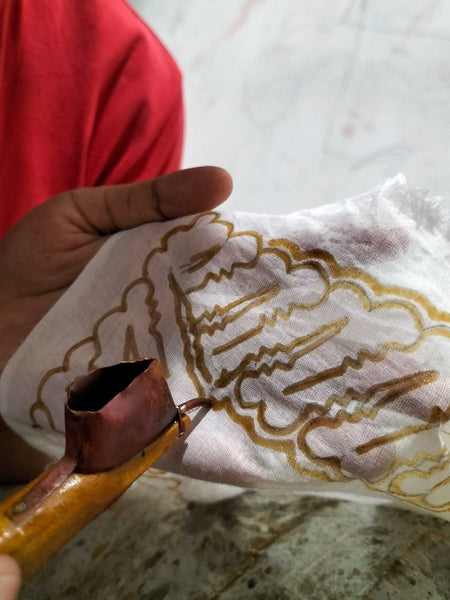Burke Residency 25: The Batik Library
•Posted on May 04 2023
BERNARDA: Hey! My name is Bernarda, born & raised in Jakarta, Indonesia. Since fashion school, I've always worked with traditional Indonesian fabric but always thought of making a collection with these motifs and patterns. The year was 2020: I was set to fly back home and planned on conducting research on batik. The pandemic hit and I wasn't able to go back home (or "mudik" as we say). I was actually saved by the advanced technology of Instagram, where I found a couple of Indonesian artisan groups that supported my research—and who I worked with to launch my gender neutral collection.
Indonesia has an incredible history of using batik patterns as storytelling. Each pattern holds its own meaning, including rituals, celebrations and specific occasions from birth to death. That's why I came up with the name The Batik Library. I wanted to share these beautiful stories that each batik holds with other artisans, fashion enthusiasts and consumers.

E: The Batik Library is so much more than a shop, you are also a resource for education, offering history about batik as well as workshops. Can you share more about the importance of learning traditional crafts?
By offering workshops, I get to engage with the community better and educate people who love this craft about how batik is made as well as showing the intricate practices of artisans having to layer complex colors onto fabrics.

E: Can you share one of your favorite Indonesian legends or folklore stories? Do you have a favorite motif or story to express in batik? Are there other ways that you like to tell stories with fashion?
On top of these traditional stories, I think I would like to storytell an ungendered experience. I've played with zippers just to experiment with who it's for. By not placing buttons on the left or right side, I feel like I don't have to have arguments over what we have rooted in society. I feel like I can be more spacious with the clothing I make.

E: Everything you carry is made with naturally dyed pieces. What materials do you use for natural dyes? Are there any challenges that arise from using natural dyes instead of synthetic dyes?
The challenge is getting the same color for different dye batches. Making them in larger quantities, for example, would make it harder for the quality control—so I end up with one-of-a-kind pieces! The intensity of the naturally dyed fabrics is also in the dipping process.

E: I love the heading on your site: “Stories from the past, fashion for the future”. What do you think the future has in store for fashion? What do you want to see in fashion’s future?
B: We would like to see a better kind of circularity in the fashion industry, a place where the skilled seamstresses can sustain a fair living wage and proper workplace no matter where they live. The future of fashion is a better consumer relationship with the pieces they own.

E: How do you connect with the artisans who design and make your batik pieces?
B: We first connected through Instagram! But I also kept in contact with my college classmates. Through them, I met a community of sustainable fashion designers in Indonesia including like-minded people that have an interest in using natural dyes and creating in better work conditions for artisans.

E: You’ve done some limited edition scarves for Lunar New Year and April - are there other limited editions or collaborative pieces you’d like to do in the future?

Comments
0 Comments
Leave a Comment